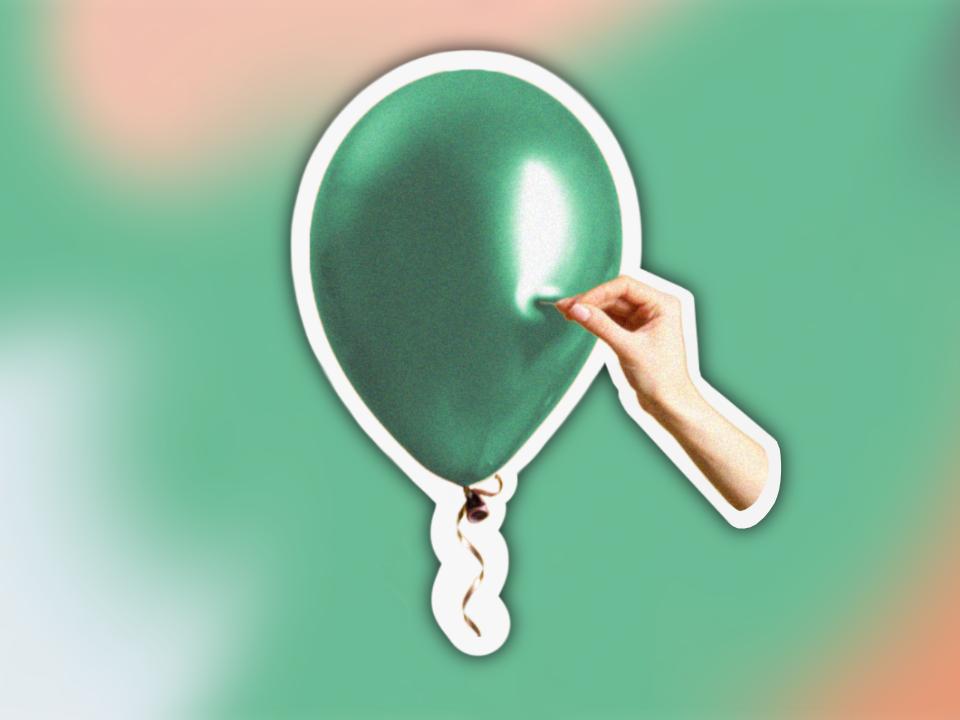Everything to Know About Facing Your Fears in Exposure Therapy
This type of therapy can help with things like anxiety, PTSD, and OCD.
If you feel particularly triggered by a person, place, or thing, you might have heard that being around said person, place, or thing—though definitely not what you want to be doing—actually can help in the long run. No, really! Even if it’s cringey or uncomfortable or, well, terrifying. That’s where exposure therapy comes in.
Therapists use exposure therapy to help you face your fears and do things that your trauma or anxiety naturally want you to avoid, says licensed psychologist Renee DeBoard-Lucas, PhD. Since fear can show up in mental health conditions like anxiety disorders, PTSD, and OCD, exposure therapy is often part of the treatment plan for those disorders, according to the American Psychological Association (APA).
Exposure therapy is generally considered to be part of cognitive behavioral therapy (CBT), which is about the connection between your thoughts, behaviors, and feelings, says licensed clinical psychologist Tamara Jacobs Sussman, PhD, an assistant professor of clinical medical psychology in Columbia University’s Department of Psychiatry. With exposure therapy, you’re essentially changing how you behave in the face of fear to, in turn, shift how you think about and feel about that fear, she explains.
You confront fear—with the help of a therapist—inside and outside of the therapy space, and, based on what kind of work you’re doing, you may also learn coping skills (like breathing techniques) along the way. Exposure therapy can look a little different depending on the person and the therapist (and what your specific trigger is), but the overall goal is to teach you that you can handle tough situations.
Sure, it might seem intimidating. Super. Intimidating. But it’s a cool concept because you’re “gaining a sense of mastery over your fear,” says Dr. Sussman, “like there's something that you can do about it.” Read more on how it works ahead.
Exposure therapy is often—but not always!—used for anxiety.
A big area you’ll see exposure therapy come into play is with anxiety. That’s because anxiety tends to trick people into thinking certain things are more dangerous than they are or that negative outcomes are more likely, and it also makes people underestimate their power to cope, explains Dr. Sussman. With exposure therapy, you’re learning how to think about your anxiety in a new way and proving to yourself that you really can cope with that anxiety, she says.
But you don’t have to have an anxiety disorder to benefit from doing exposures, says Dr. DeBoard-Lucas. “There can just be anxiety that is getting in the way of something you need or want to do,” she notes.
Exposure therapy isn’t just about throwing you headfirst into your fears.
While there is one type of exposure therapy that actually starts with throwing people into a situation they find most scary (called “flooding”), that’s not what the experts we spoke with personally use. Also, most people wouldn’t realistically sign up for that. Typically, exposure therapy involves what therapist Brittney Chesworth, PhD, LCSW, calls an “exposure hierarchy” (and what the APA refers to as a “graded” pace).
Step by step, you’d take on bigger and bigger challenges to confront your fear, starting from something that isn’t too hard to handle, Dr. Chesowrth says. For example, if you’re scared of needles—or have a diagnosed phobia of them—you might start by looking at a photo of a needle, then working your way toward finally getting your blood drawn. Though a therapist might have you do relaxation techniques when you’re facing your fear to calm down, the whole idea is to eventually get you to a place where you can go into uncomfortable situations without any support, Dr. Chesworth explains.
There are also steps in between to make the scariest situation on that hierarchy a little less scary. And once you do each exposure on your hierarchy, you’d reflect on how it went for you to wrap up the experience in a bow, says Dr. Sussman. How did it make you feel? Did you find anything surprising? What did you learn? (Hopefully that you can pull through!)
Worth noting: “The goal of exposure therapy is for people to do the things they want and need to do, so I wouldn't ask them to do something extreme and unnecessary,” Dr. Sussman explains. So, if you’re afraid of spiders, the last thing on your list doesn’t need to be sitting in a room with 100 of them, she says. And, FWIW, you’re not going to head into a therapy session and get forced to do an exposure that feels like it’s too much for you, adds Dr. DeBoard-Lucas.
The fears you face in exposure therapy can be tangible things or more nebulous concepts.
While we tend to think of exposure therapy as a way to face our fear of something concrete—like needles or spiders or water—it’s actually often used to deal with the intangible things that cause us anxiety too. For instance, an exposure hierarchy can help you learn to tolerate uncertainty and fear of the unknown, which is a big, ominous, anxiety-inducing thing that’s top of mind for people with generalized anxiety disorder, Dr. Chesworth explains.
Addressing an intangible fear like this works the same way, but you’d be putting steps on your exposure hierarchy to deal with uncertainty itself and relinquish your need for control, Dr. Chesworth says. For example, you might like leaving extremely early for appointments because you’re nervous about what parking looks like or if you’ll get stuck in traffic. One item on your list would be that you show up half an hour early instead of an hour early.
Exposure therapy can even address fears around physical symptoms—like if you deal with panic disorder or health anxiety. A therapist might help you learn to tolerate symptoms that usually trigger your health anxiety or a panic attack (like a racing heart) using “interoceptive exposures,” explains Dr. Chesworth. For example, some of her clients might avoid working out because they’re afraid of a sudden heart attack, so she’d have them run stairs or in place to learn, over time, that increased heart rate from exercise won’t up their risk of a heart attack.
It’s the same with panic attacks. “You can tell someone all day long that panic symptoms aren't dangerous. But they're not going to believe it until they can learn to experience the symptoms and see for themselves that they're not dangerous and stop avoiding the things that are bringing on those symptoms,” Dr. Chesworth adds.
Exposure therapy can also help with OCD, trauma, and PTSD.
A specific type of exposure therapy used in OCD treatment, called "exposure and response prevention” or “ERP,” exposes you to what makes you anxious or afraid, and then encourages you to not do whatever compulsion you usually engage in to lessen your anxiety, Dr. Sussman explains. For instance, if you feel like you have to check the stove one, two, three, four times, this might look like leaving the house without checking at all. If you're someone with relationship OCD, you might purposely read an article about signs your partner's The One, then refrain from asking anyone (even them) for reassurance.
Treating PTSD also often involves exposure therapy. Experts can help patients confront traumatic memories with a specific exposure therapy proven to help PTSD symptoms called "prolonged exposure” or “PE,” explains Dr. Sussman, who offers this type of trauma therapy. PE usually lasts for about three months, according to the APA. With PE, a therapist might have you repeatedly talk through a traumatic memory—what the APA calls “imaginal exposure”—and name thoughts and feelings that make you not want to relive it, such as, “If I had done things differently, this wouldn’t have happened,” Dr. Sussman says.
You’d then go over what Dr. Sussman calls “hotspots” of the traumatic memory that are the hardest to think about. You might slowly work your way up to going places or doing things that remind you of the trauma—stuff you tend to avoid—like walking at night, Dr. Sussman says. You’d do a lot of these situational exposures outside of therapy when you’re ready, she notes.
If you think exposure therapy might be right for you, check in with a mental health professional.
If you’re interested in this type of treatment, look for a therapist who specializes in exposure therapy by tailoring your search online. Check resources like Psychology Today, where you can filter for mental health pros who offer ERP and PE. You can also look at the International OCD Foundation directory for therapists who might have experience with ERP. Try the Academy of Cognitive and Behavioral Therapies to narrow down mental health pros with exposure experience through their CBT training or with an exposure therapy speciality.
Keep in mind that even though you have a therapist walking you through this process initially, you’re very much in the driver’s seat because doing exposures on your own is a big part of the process. In-session exposure once a week isn’t enough for progress’s sake, says Dr. DeBoard-Lucas. You’d practice making phone calls in a session, if that’s what you’re anxious about, and then continue doing those calls at home, she explains. You’d also have your therapist help you prepare before doing exposures away from them, assures Dr. Chesworth (it’s not completely DIY).
This will give you the tools and confidence to cope without your therapist later on in life. “Learning how to approach the whole thing so that you can design an exposure for yourself can be powerful because you can teach yourself how to get past fears,” Dr. Sussman says.
Wondermind does not provide medical advice, diagnosis, or treatment. Any information published on this website or by this brand is not intended as a replacement for medical advice. Always consult a qualified health or mental health professional with any questions or concerns about your mental health.




